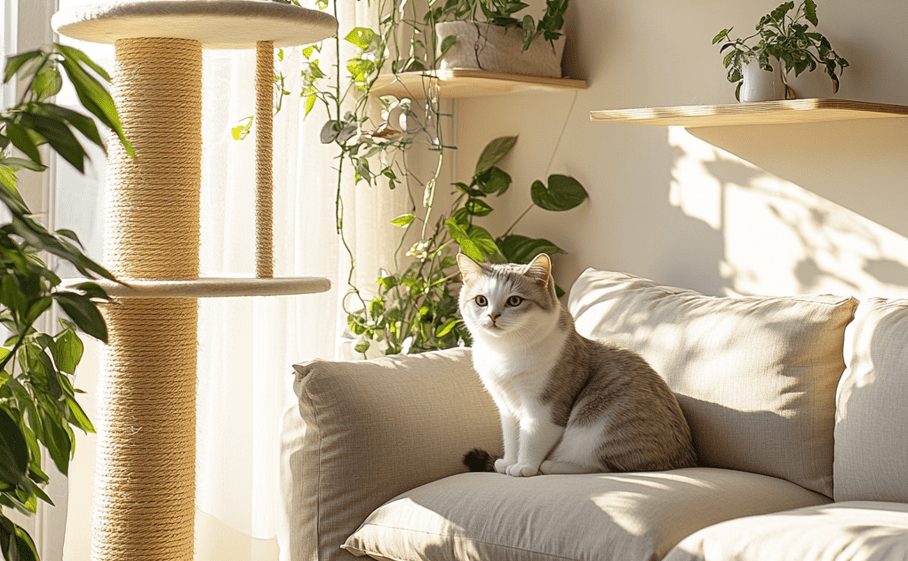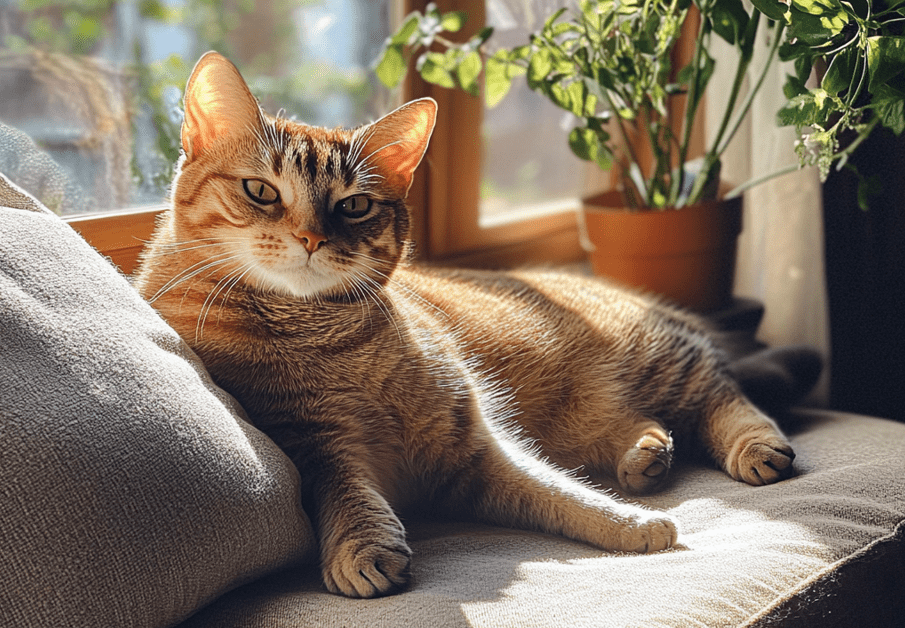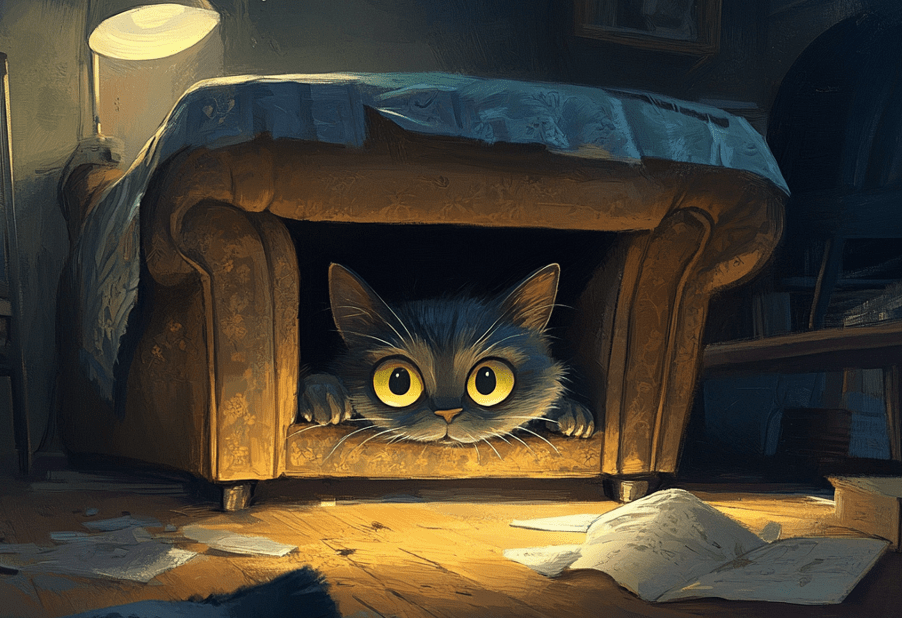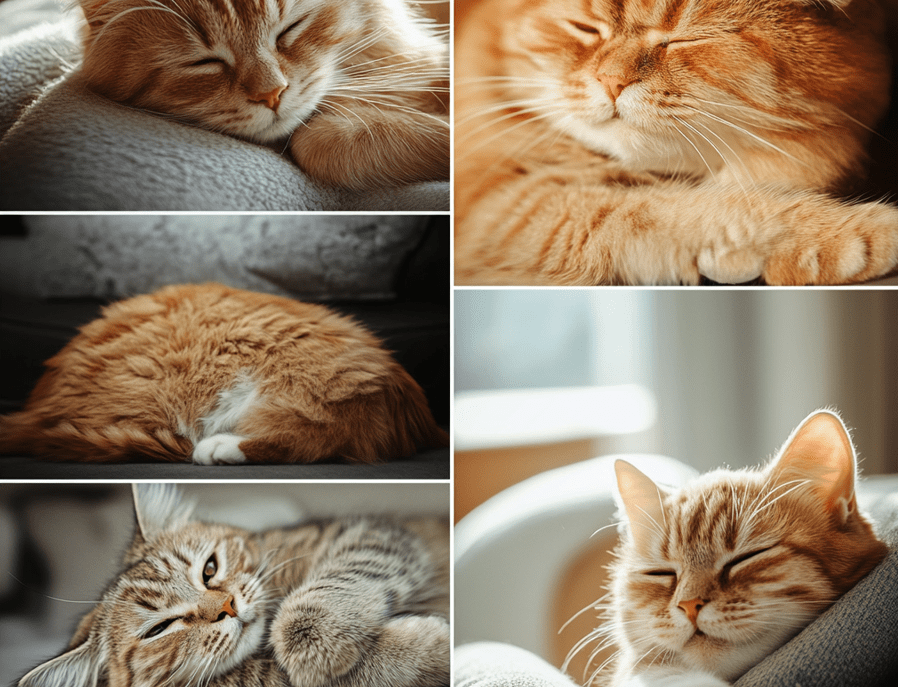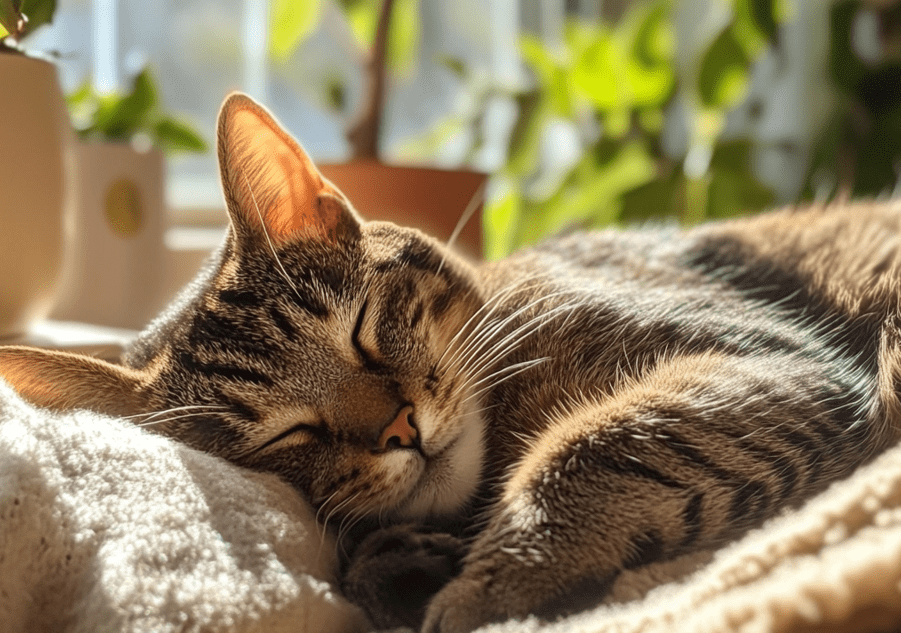
To understand “cat sleep patterns”, you have to give them enough time to take care of them. If you care better for them, you can easily understand their sleep cycle.
Domestic cats follow natural sleep habits whereas wild cats sleep for extended periods due to conserving energy for hunting. Cats are predatory animals so they have to keep their body sound and energetic. For this reason, they need extra sleep to store extra energy and to keep continuously concentrated while grabbing prey.
A cat’s sleep pattern gives an indication of a health condition. While the cat’s health is good, the cat sleeps in a regular pattern. If you find your cat’s sleep unusual it may happen due to sickness. On the other hand, if your cat sleeps a little, it may cause extra precautions like saving themselves from enemies, alerts on attacks, and awakening at the slightest sound, or discomfort with a new place. You can understand light sleeper cats through the vibration or trembling of paws and whiskers, movement of eyelids, movement in sleep, and unexpected face or body movement.
To watch the summary of this article, just watch this video –
Average cat sleep duration:
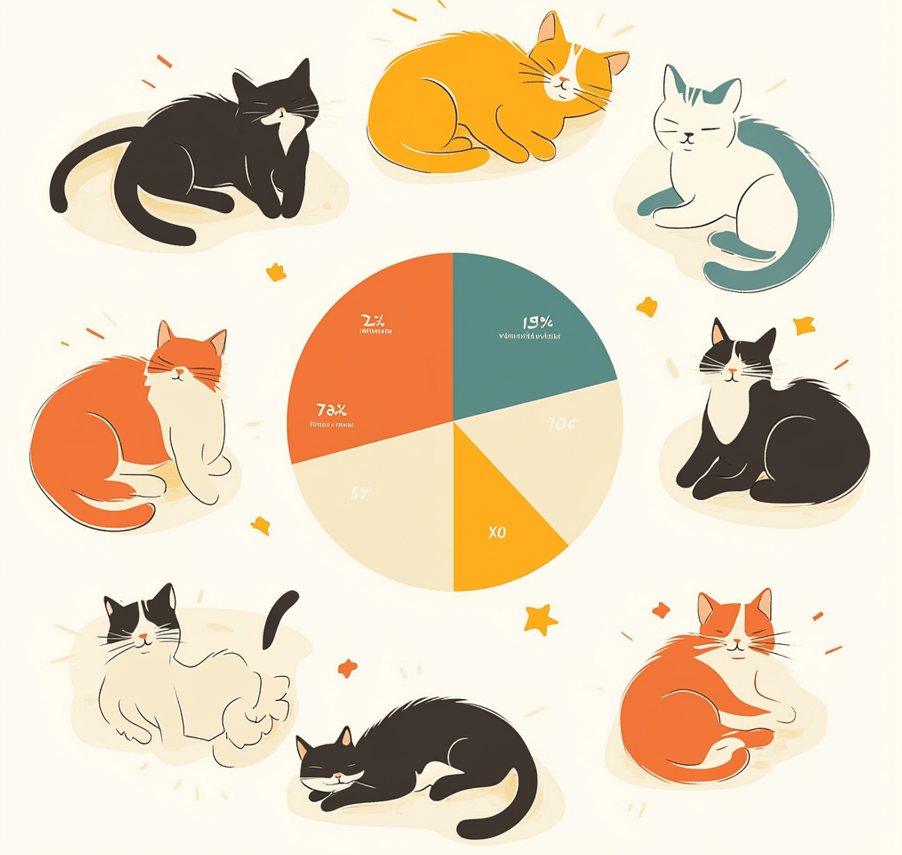
Cats generally sleep 12 to 16 hours a day. It may vary from cat to cat. Many factors like age, health condition, activity level, diet, and sickness influence sleep patterns. In many observations, it has been seen that most of the cats sleep more than 18 hours in a day, in number it is about 40%. The sleep time of a random cat is about 15 hours on average and they spend 75 percent of their life snoozing. Generally, a cat sleeps twice a day, and the time of the sleep cycle of a cat is about 8 hours.
As like human children, kittens sleep longer than adults and senior cats. The kitten sleeps about 20 to 22 hours a day. Adult cats are more playful than kittens and senior cats. So, they have erratic sleep patterns. They approximately sleep 10 to 16 hours a day. Senior cat has a more set schedule for sleeping. They are not curious as much as adults or junior cats. So, they can maintain a balanced time schedule for everything including sleeping. A senior cat sleeps 15 to 18 hours on average.
Stages of a cat’s sleep:
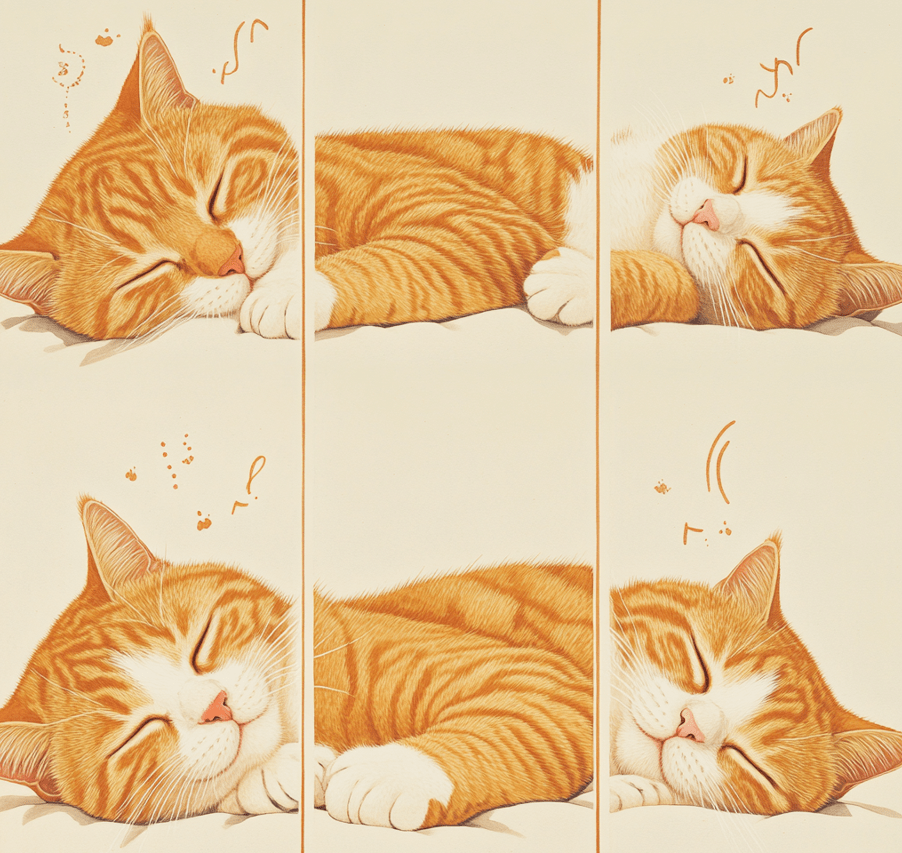
Light sleep: Light sleep is the first stage of sleep. It is a rest time for a cat. If any harmful situation has occurred in light sleep mode or cat napping period they can immediately take a step to save their life. In cat napping, cats keep their body in alert posture for quick wake-up. A cat-napping period is about 40 to 50 minutes. In light sleep, cats spend 75 percent of their time asleep.
Deep sleep: Deep sleep is very helpful to gain physical and mental restoration. In deep sleep, the cat’s body becomes relaxed. In this period cat’s hard to wake up and hear. Generally, cats use their 25 percent sleep time in deep sleep. The duration of deep sleep is about 5 to 10 minutes typically. But in some cats, it can last about 30 minutes. The signs of deep sleep:
1.In deep sleep, they become quiet and occasionally snore.
2.The breathing of cats becomes slower and their body does not move much with every breath.
3.Their eyes are completely closed and eyelid movements are hardly to be seen and they are not easily disturbed by noise or movement.
Dreaming Stage: The dreaming stage is the last stage of the sleep cycle of cats. It is also known as REM sleep. In REM sleep cats tremble their eyes, ears, and tail, squeak, stretch, and snore. And move their heads as if they’re watching something. The brain structure of cats is similar to humans and shows high levels of electrical activity in their brains during dreaming. The duration of REM sleep is about 5 to 7 minutes. The dream of a cat is a mystery. But it is likely about their experience gathered from the day. Such as catching prey or playing.
Factors that influence a cat’s sleep cycle:
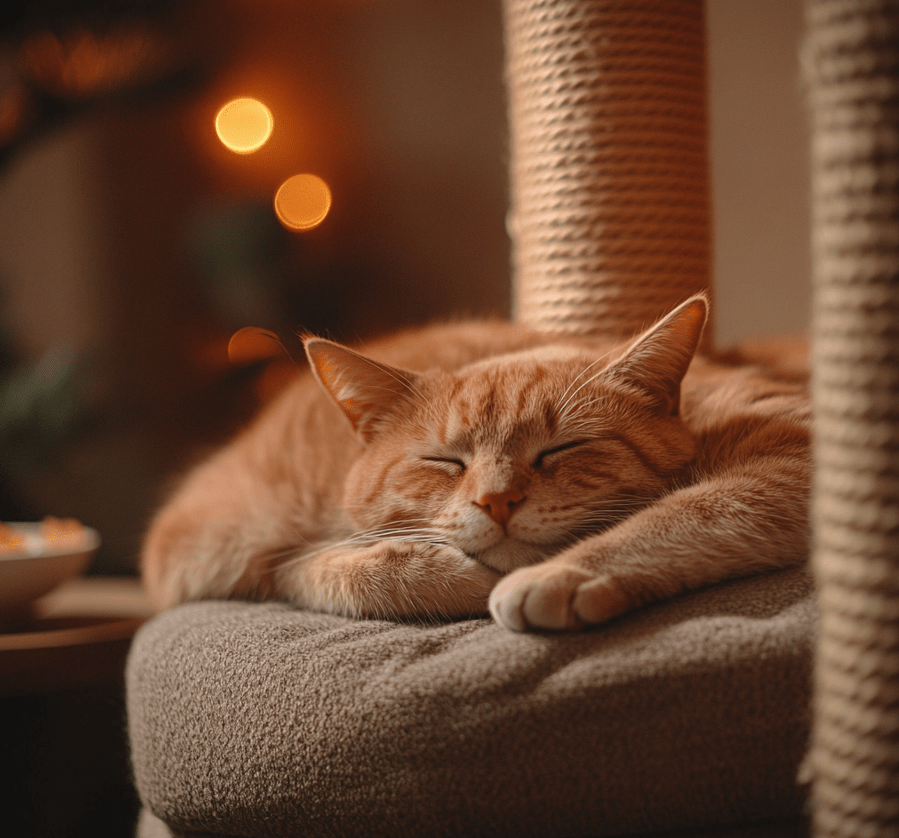
Natural Instincts: Cats are naturally predatory animals. So, they spend most of their energy catching prey. For this reason, they have to conserve their energy. To conserve energy they sleep more.
Environment and routine: If cats feel the environment is safe, then they sleep more. They have no fear of attacks from other predators or animals. If the cats sleep more and are near to you that means they trust you. Generally, cats follow a routine to sleep.
Aging: The senior cat sleeps more than younger or adult cats due to aging.
Meals: The quantity and timing of feeding your cat may affect the sleep pattern of your cat. If cats take less food or starve for a long time, then they stay awake longer than usual. On the other hand, if they eat more quality food and more than they need, they sleep more than usual.
Diseases: If cats have become sick, then they sleep more than usual. Cats can sleep more for medications for infections, kidney disease, depression, and so on.
Understanding variations in sleep patterns with age:
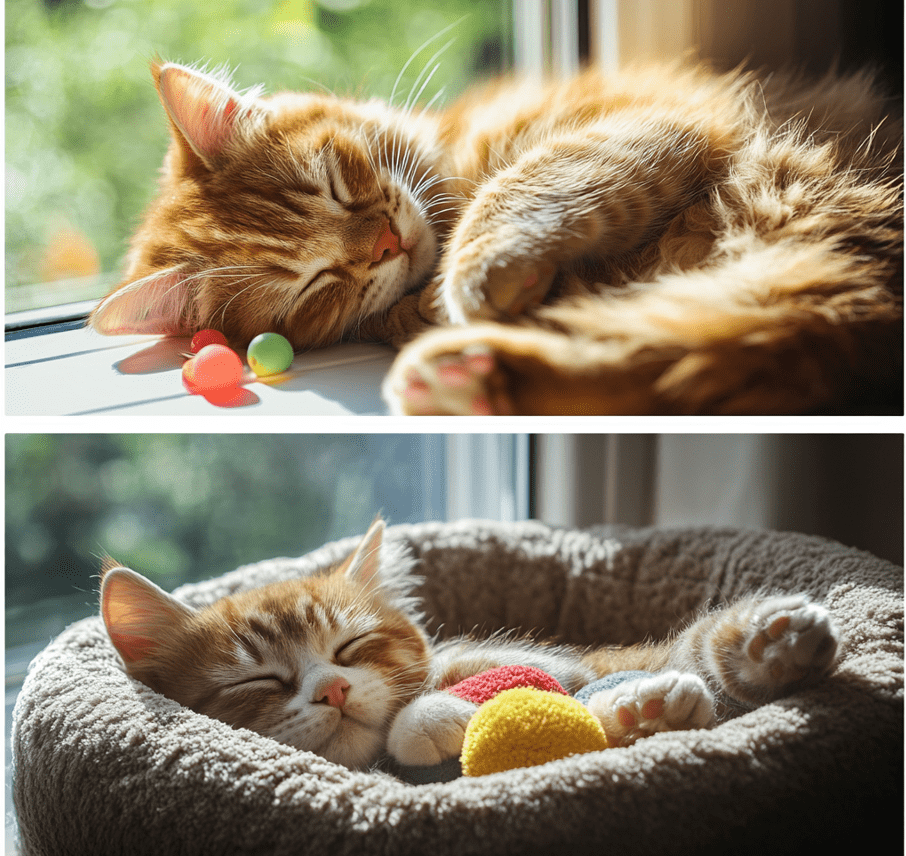
First-time cat owners often wonder what to expect on the first night kitten new home. It’s important to create a calm and secure space right away to ensure a smooth transition.
Kittens: Kittens need extra sleep for their high growth rate and development. During the kitten first night, expect frequent napping interrupted by brief moments of exploration and curiosity. Kittens eat more than their size to conserve nutrients for their high growth rate. To consume more food, they need extra sleep.
Senior cat: Aged cats or senior cats have many health problems due to aging. They are not as active as the younger or adult stage. They try to avoid any clash with other cats. For these reasons, they need a longer rest period.
Adult cat with health issues: Health issues increase the sleeping time of any age cat. The conditions of healing fast are more nutrients, food and more sleep. Adult cats sleep more to get well fast from disease and at that time they have no more energy for play or catching prey for a long time.
Tips for Supporting Healthy Sleep Patterns in Cats:
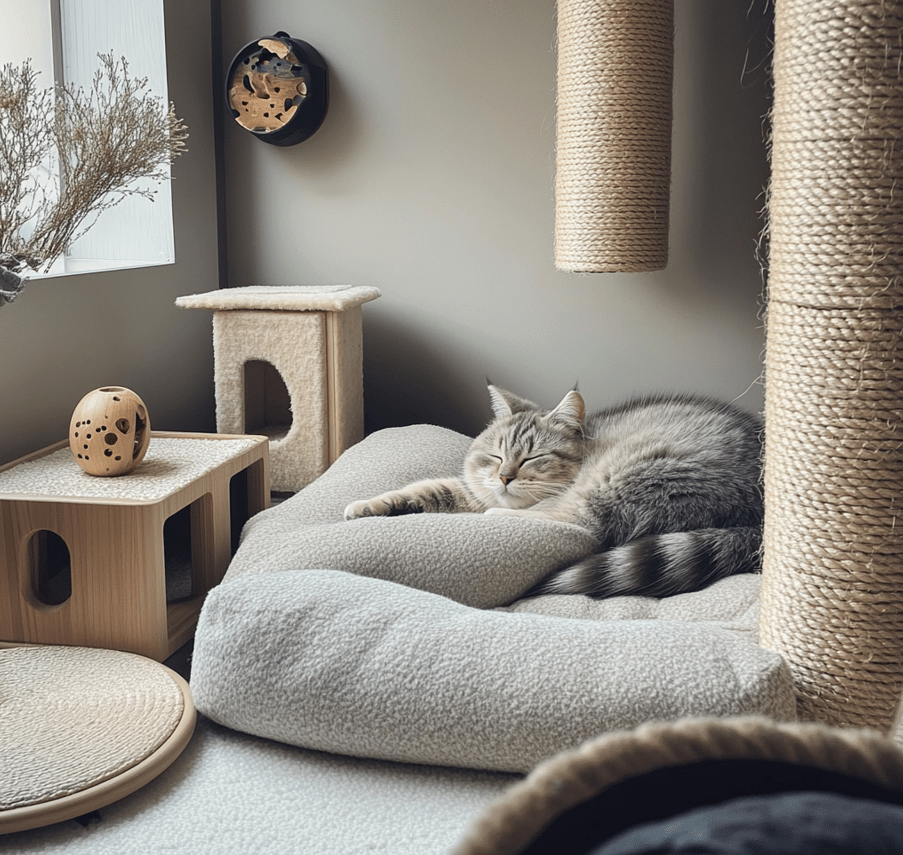
If you’re navigating your first night with a new kitten, remember that gentle interaction and a designated sleeping space help reduce stress and support early bonding.
Provide a calm and secure environment: On a new kitten first night, soft bedding and your familiar scent help ease anxiety and support restful sleep. Homie’s cat can not survive without the owner’s help. They want security from owners. To create a good connection with your feline friend you have to provide a calm and secure environment. Which improves your cat’s healthy sleep patterns and mental conditions.
Provide mental and physical stimulation: During awake periods, if your cat uses more energy to solve puzzles and in physical activities, it can sleep better. Which can improve your cat’s growth and mental health. So, give them to solve some puzzles every day and provide playing items.
Set up a routine: A routine life is the best life. It is not only appropriate for humans but also for pets. Try to maintain a routine for your feline friend for feeding and playtime. Routine feeding and playtime help your cat to sleep on time.
Sleep position according to feelings:
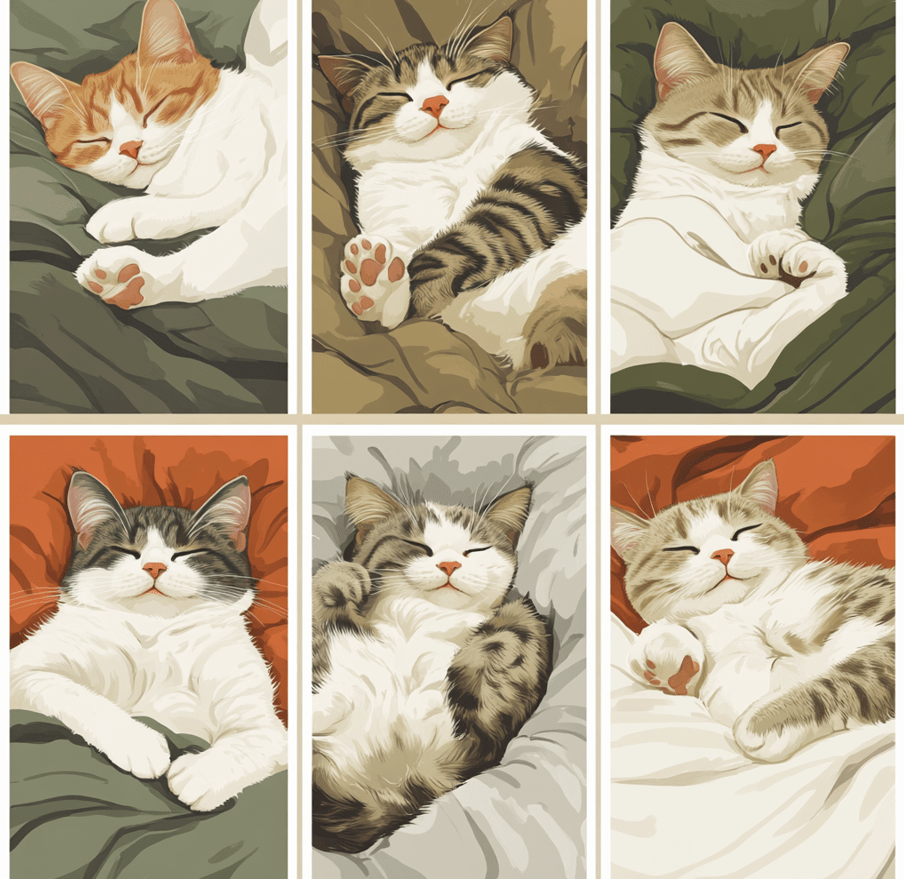
Observing your kittens first night in new home can help you understand their comfort level through their sleep posture and location choices. Cats sleep in various positions according to their feelings. A cat sleeps in a belly-up position when he trusts you and feels the environment is safe. Cats may sleep under covers for warmth, comfort, and the scent of their owners. A cat sleeping with a paw across their face is probably not wanting to be disturbed. Cats often sleep curled up to protect themselves and maximize body warmth. A cat sleeping upright is feeling safe and confident in their surroundings. A cat sleeping on their side is usually in a deep sleep and feels comfortable and relaxed.

